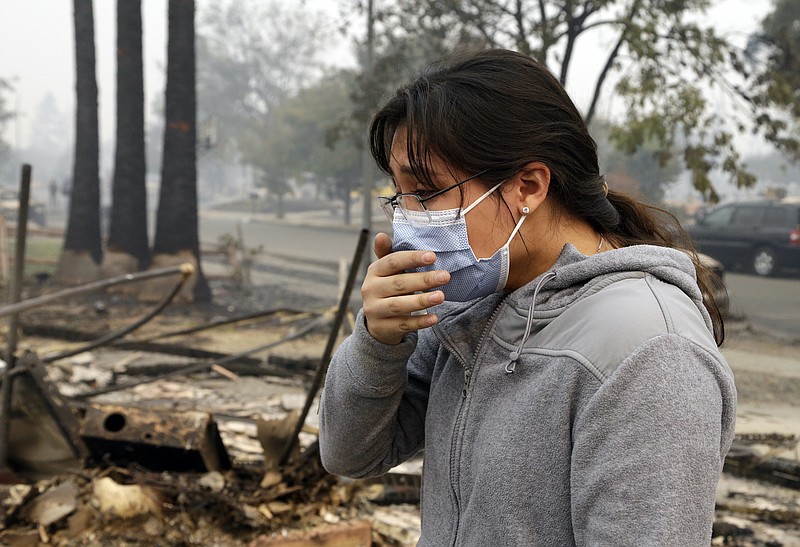How many towns do we need to see burned into oblivion? How many Greenvilles and Paradises in California? How many Detroits, Blue Rivers, Vidas, Phoenixes, and Talents in Oregon? How many Maldens in Washington state? How many Gatlinburgs and Pigeon Forges in Tennessee?
How much more ice must melt from the Greenland ice sheet? Just last week NASA reported that a new heat wave that began on July 28 spurred Greenland's biggest melting event of the 2021 season so far. Researchers explained that enough water melted to cover all of Florida with two inches of water.
All of Florida. Two inches of water.
There's more. There's the ocean. You likely remember the 2004 climate science fiction disaster movie, "The Day After Tomorrow" about catastrophic climatic effects disrupting of the North Atlantic Ocean circulation and causing extreme weather events that ushered in global cooling and lead to a new ice age.
On Thursday, a new analysis published in the journal Nature Climate Change, drew on more than a century of ocean temperature and salinity data that show significant changes in eight indirect measures of the Atlantic Ocean's Meridional Overturning Circulation. That circulation, sometimes called the "conveyor belt," transports warm, salty water from the tropics to northern Europe and then sends colder water back south along the ocean floor.
The upshot of the new data analysis? Human-caused warming has led to an "almost complete loss of stability" in the system that drives Atlantic Ocean currents - "raising the worrying prospect that this critical aquatic 'conveyor belt' could be close to collapse," according to a Washington Post story about the study.
"Researchers who study ancient climate change have also uncovered evidence that the AMOC [the Meridional Overturning Circulation] can turn off abruptly, causing wild temperature swings and other dramatic shifts in global weather systems," the Post wrote.
If the circulation shuts down, it could bring extreme cold to Europe and parts of North America, raise sea levels along the U.S. East Coast and disrupt seasonal monsoons that provide water to much of the world - kind of like in the movie.
It's something scientists have expected might happen with the worst of climate change in some 300 years. But the new analysis suggests "the critical threshold is most likely much closer than we would have expected," said study author Niklas Boers, a researcher at the Potsdam Institute for Climate Impact Research in Germany.
All is not lost. There is some good climate news out there.
Sales of hybrid cars, which have gas engines but can run on electricity for a limited range, are surging - a good sign for the future of electric vehicles, experts say.
Also Ford Motor Co., for the first time in its 118 year history, said it plans to spend more on electrified vehicles than it does on internal combustion engine vehicles starting in 2023, according to COO Lisa Drake.
Better still, the Biden administration last week announced stricter fuel-efficiency standards.
The president on Thursday signed an executive order calling for half of new cars to be electric or plug-in hybrids by 2030. (This writer has been driving a gas/battery-power hybrid on the ups and downs of East Tennessee roads for more than 10 years. It's a great car, and what's not to like about spending less than $200 a year on gasoline?)
But better than new cars, Biden's set of new goals and mandates marks one of his administration's most consequential pushes to combat climate change and tackle the nation's biggest source of greenhouse gas emissions.
Forged after months of talks with car manufacturers, autoworkers and environmental groups, the policy is meant to reduce the country's reliance on fossil fuels and slow rising global temperatures - the stuff of those fires and melts and ocean changes.
And yeah, there will be new and changing jobs, too.
"Today, labor and industry, state and local leaders, are all working together to write the next chapter in the American story," Biden said on the White House's South Lawn. "We're in competition with China and many other nations for the 21st century. To win, we're going to have to make sure that the future will be made in America."
The new rulemaking has EPA now aiming for new passenger cars and trucks to get an average of 52 miles per gallon by 2026, a standard the agency said would be its most stringent yet.
We're in. Gosh that will make this writer's ride - with its 45-ish mile per gallon average - a gas hog.
Bring on these new buggies.
